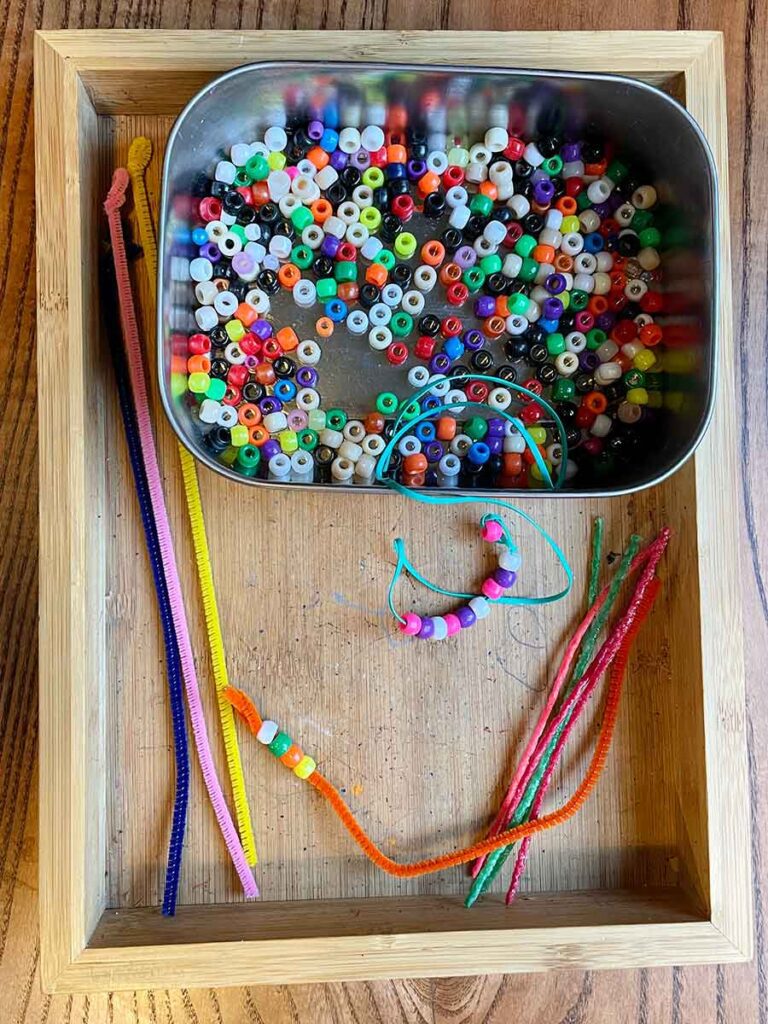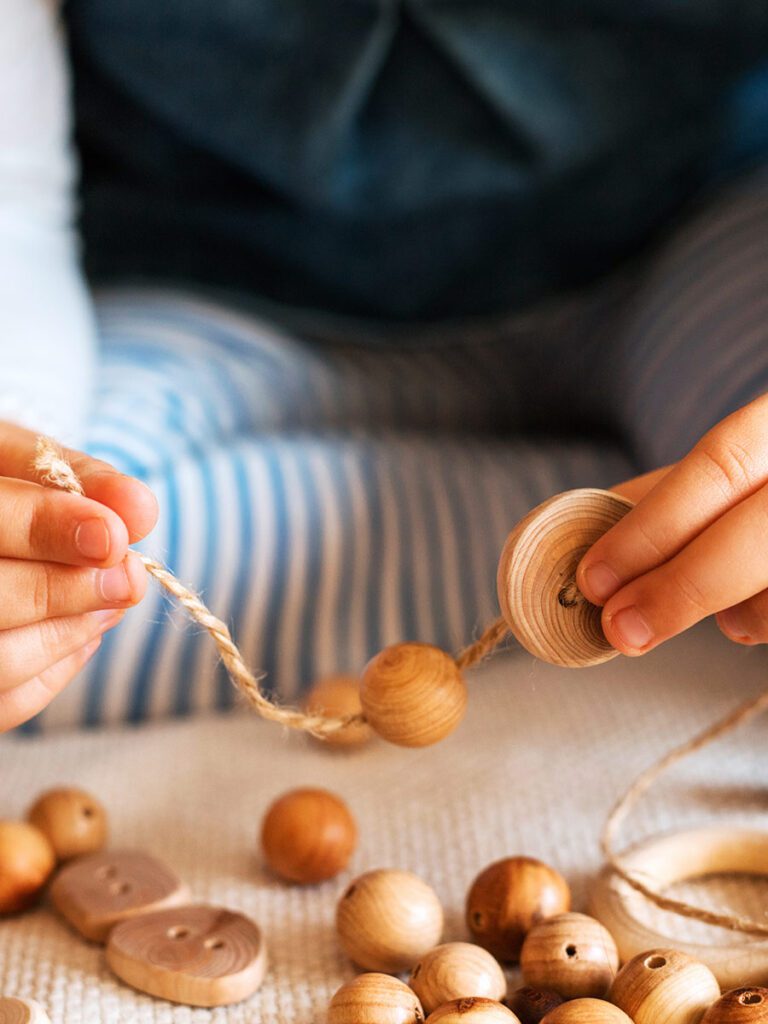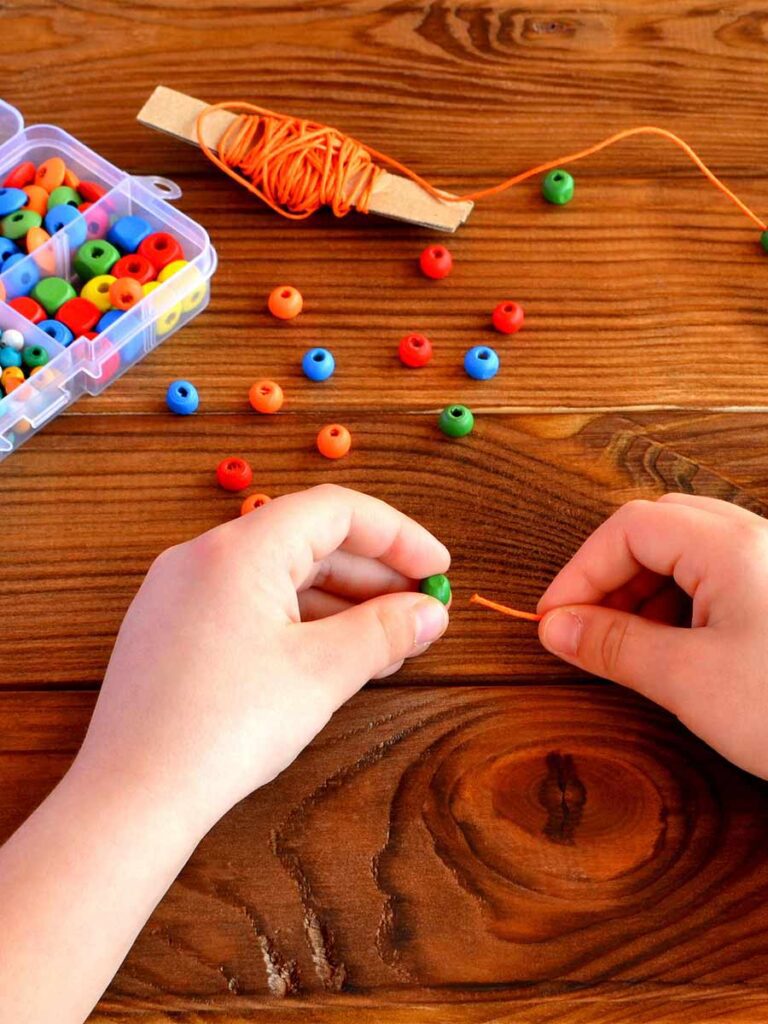Beading Bracelets
Introduction
There's nothing quite like beading for the development of hand-eye coordination and fine-motor skills. This pre-writing activity prepares preschoolers for school-age activities such as holding a pencil and printing letters and numbers. But beading is also a great way to lay the foundation for later math learning. Surprised? Read on to find out how!

Gather Materials
- Beads
- Pipe cleaners, Wikki Stix, a shoelace or a string with a taped tip
- A tray or a cookie sheet to keep the beads in one place
Note: Small parts pose a choking hazard and are not appropriate for children age five or under. Be sure to choose lesson materials that you feel are safe for your child and that you are comfortable letting your child use.
Activity
What does beading have to do with writing and math? Check out the bullet points below to see how much learning can be packing into this classic childhood past-time.
First, let's look at some of the physical benefits of beading:
- Fine-motor skills: Beading strengthens finger muscles and helps children develop more control over their hand movements. Fine-motor skills pave the way for greater independence by preparing young children to tie their own shoes, get dressed independently and write when they start kindergarten.
- Bilateral Coordination: Beading also fosters bilateral communication, which enables both sides of the body to work together to complete a task. When threading beads, your child will learn how to hold the bead with one hand while controlling the string with the other.
- Visual perception: When the brain makes sense of what the eyes see, this is visual perception. When a child threads a bead onto a string, the brain and the hands are working together. As children bead, they are working hard to develop their eye-hand coordination and visual tracking abilities, which are important pre-writing and pre-reading skills.
I start out with larger wooden beads and a stick for young toddlers. After the children master this task, they graduate to stringing medium-sized beads onto pipe cleaners or Wikki-Stix. Eventually, we work our way up to threading smaller beads onto a shoelace or string.
If your child receives a bead kit as a gift and the holes in the beads are itty-bitty, he or she will quickly become frustrated. Why not try pony beads instead? They have larger holes that can accommodate pipe cleaners.
Whether you're using string, shoelaces, Wikki Stix or pipe cleaners, always place a knot at the bottom to prevent the beads from falling off of the other end. After all, beading is meant to be fun, not frustrating!
When children attempt to master a difficult task such as threading a string through a tiny hole, they learn valuable life skills such as how to sit still and focus, as well as how to persevere and try again if their first attempts fail.
If your child is an avid beader, you can extend the learning by introducing some of these early math activities:
- Roll a die, count the pips and add that many beads to the pipe cleaner.
- Use beads of different colors to create a pattern such as Red-Blue-Yellow, Red- Blue-Yellow, Red- Blue-Yellow.
- Sort the beads by color.
Keep a pencil box loaded with beads and pipe cleaners for an easy activity that you can grab quickly. Use a tray or a cookie sheet to keep the beads from rolling away. It will make life easier for you and less frustrating for your child.
Here's another important tip that will surely save your sanity: Just because there are 100 beads in the bag that you purchased, you don't have to set them out all at once. More is not better, it's just more!


